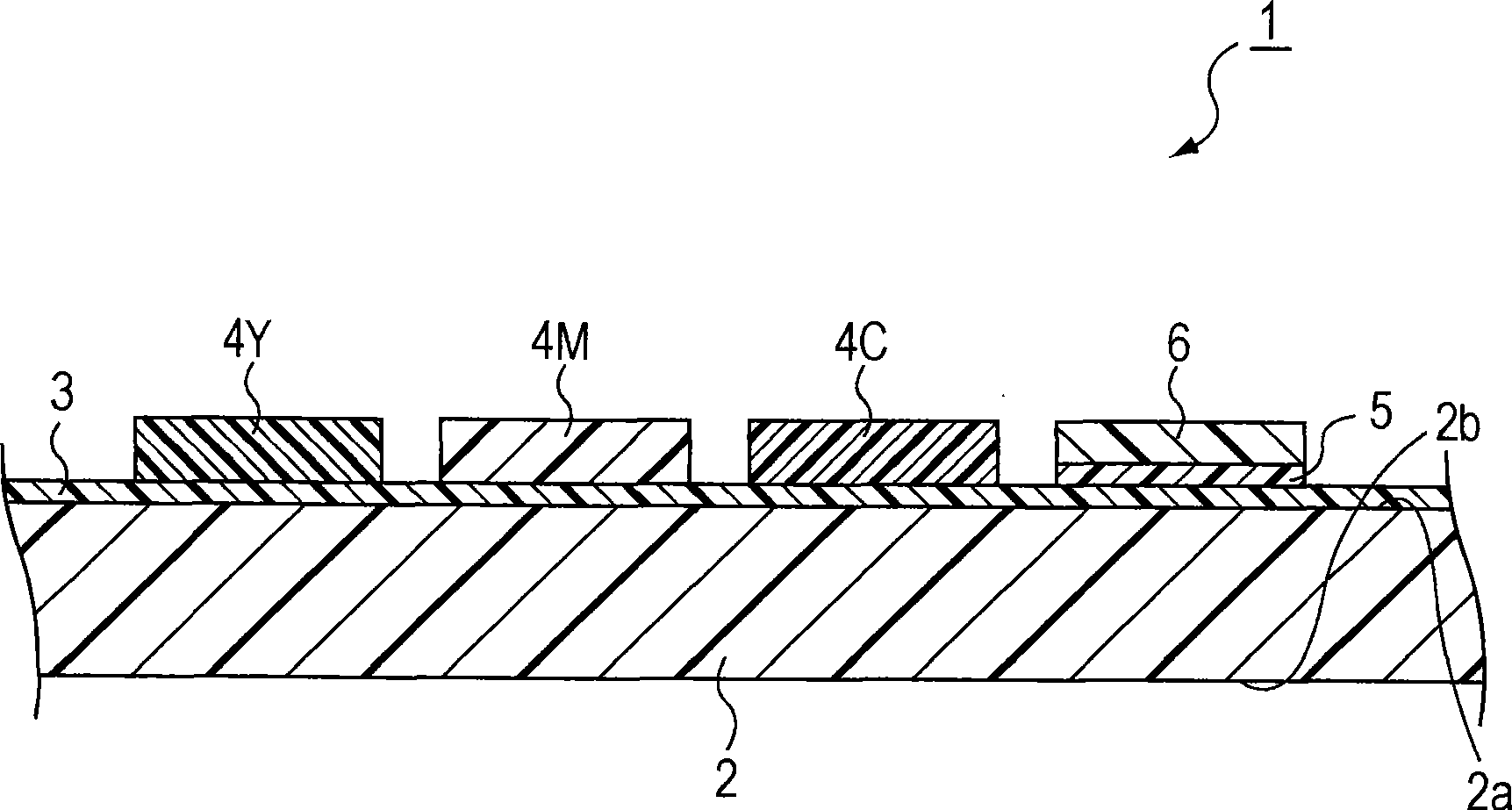Thermal transfer recording medium
A recording medium and thermal transfer printing technology, applied in temperature recording method, printing, printing device, etc., can solve the problems of uneven supply to the protective layer, uneven image, uneven gloss, etc.
- Summary
- Abstract
- Description
- Claims
- Application Information
AI Technical Summary
Problems solved by technology
Method used
Image
Examples
Embodiment 1
[0296] In Example 1, a 6 µm-thick film (trade name: 602 6.0E, manufactured by Diafoil Corp.) treated to improve adhesion was used as the base film. A back layer coating liquid (heat resistant layer coating liquid) having the composition shown in Table 1 was coated on one surface of the base film by printing, followed by drying to form a back layer. A primer layer coating liquid having a composition shown in Table 2 was applied on the other side by printing, followed by drying to form a primer layer. The primer layer contains a fluorosurfactant (carboxylate) of formula (1).
[0297] Table 1
[0298] Back layer coating liquid content Polyvinyl butyral resin
(S-Lec BX-1 from Sekisui Chemical Co., Ltd.) 3.5 parts by weight Phosphate-Based Surfactants
(Plysurf A208S from Dai-ichi Kogyo Seiyaku Co.,
Ltd.)
3.0 parts by weight Phosphate-Based Surfactants
(Phosphanol RD-720 from Toho Chemical
Industry Co., Ltd.)
0.3 parts by weig...
Embodiment 2
[0313] In embodiment 2, thermal transfer recording medium is prepared like embodiment 1, but with the fluorosurfactant (trade name: Ftergent150, Neos Co. , Ltd.) in place of the fluorine-containing surfactant used in the primer layer, and polyvinyl acetal (trade name: S-Lec BX-1, Tg: 90°C, produced by Sekisui Chemical Co., Ltd.) Polyvinyl acetal used in the release agent layer.
Embodiment 3
[0315]In Example 3, a thermal transfer recording medium was prepared as in Example 1, but the fluorosurfactant (trade name: FC4430 produced by Sumitomo 3M Limited) represented by the formula (1) was used instead of the one used in the primer layer. Fluorine-containing surfactant and polyvinyl acetal (trade name: S-Lec BX-5, Tg: 86°C, manufactured by Sekisui Chemical Co., Ltd.) in place of the polyvinyl acetal used in the release agent layer .
PUM
| Property | Measurement | Unit |
|---|---|---|
| glass transition temperature | aaaaa | aaaaa |
| thickness | aaaaa | aaaaa |
| glass transition temperature | aaaaa | aaaaa |
Abstract
Description
Claims
Application Information
 Login to View More
Login to View More - R&D
- Intellectual Property
- Life Sciences
- Materials
- Tech Scout
- Unparalleled Data Quality
- Higher Quality Content
- 60% Fewer Hallucinations
Browse by: Latest US Patents, China's latest patents, Technical Efficacy Thesaurus, Application Domain, Technology Topic, Popular Technical Reports.
© 2025 PatSnap. All rights reserved.Legal|Privacy policy|Modern Slavery Act Transparency Statement|Sitemap|About US| Contact US: help@patsnap.com

